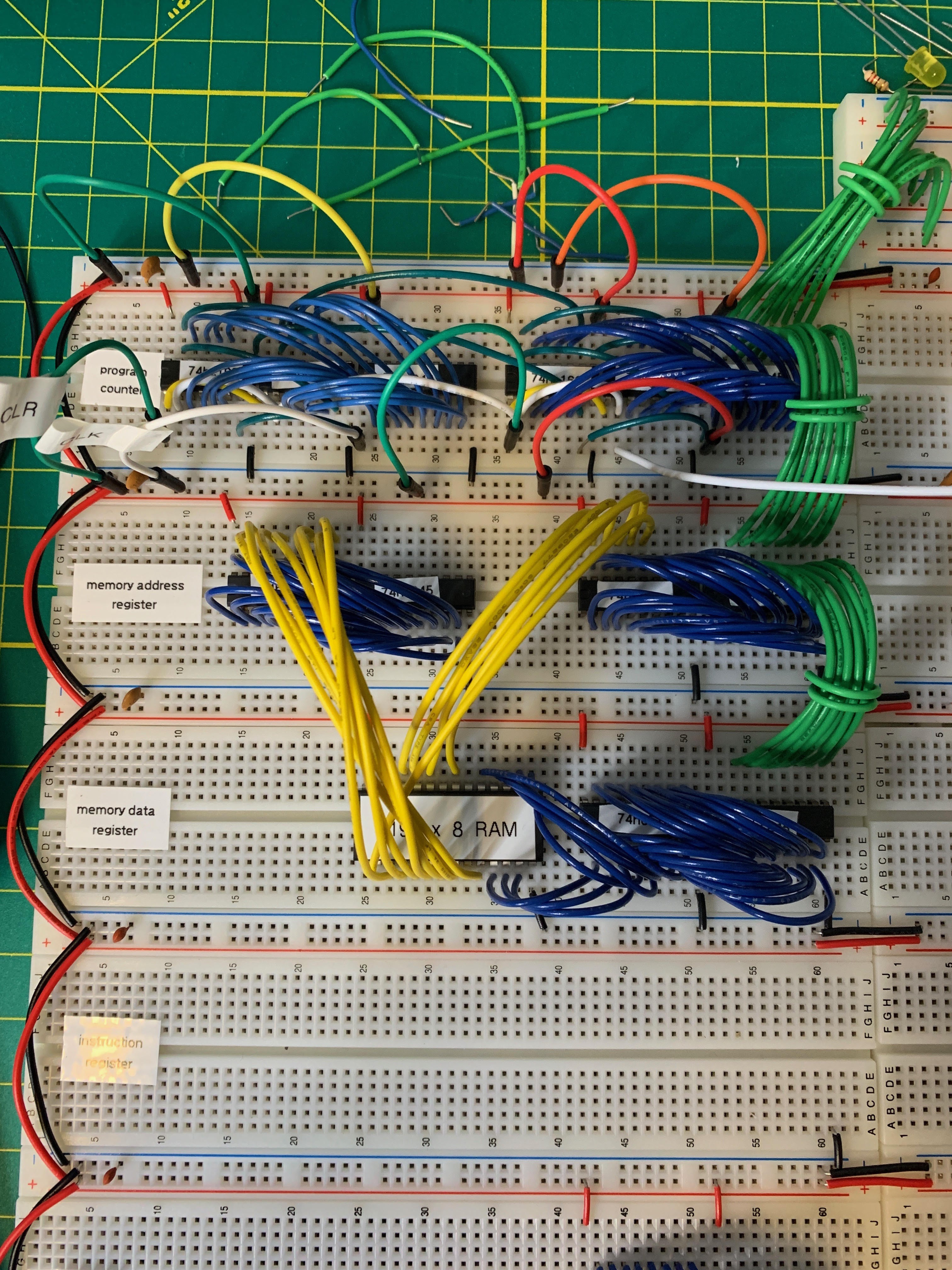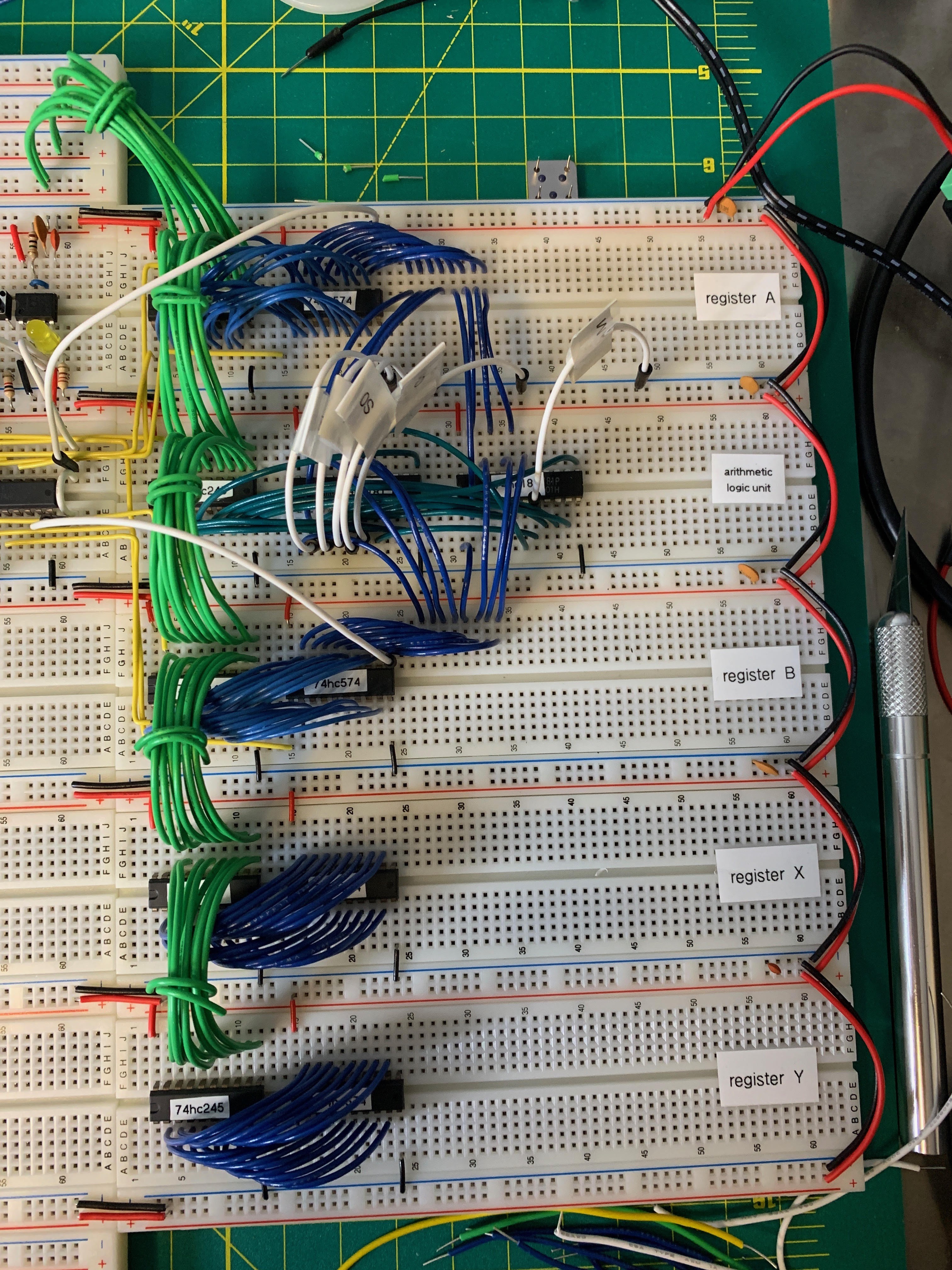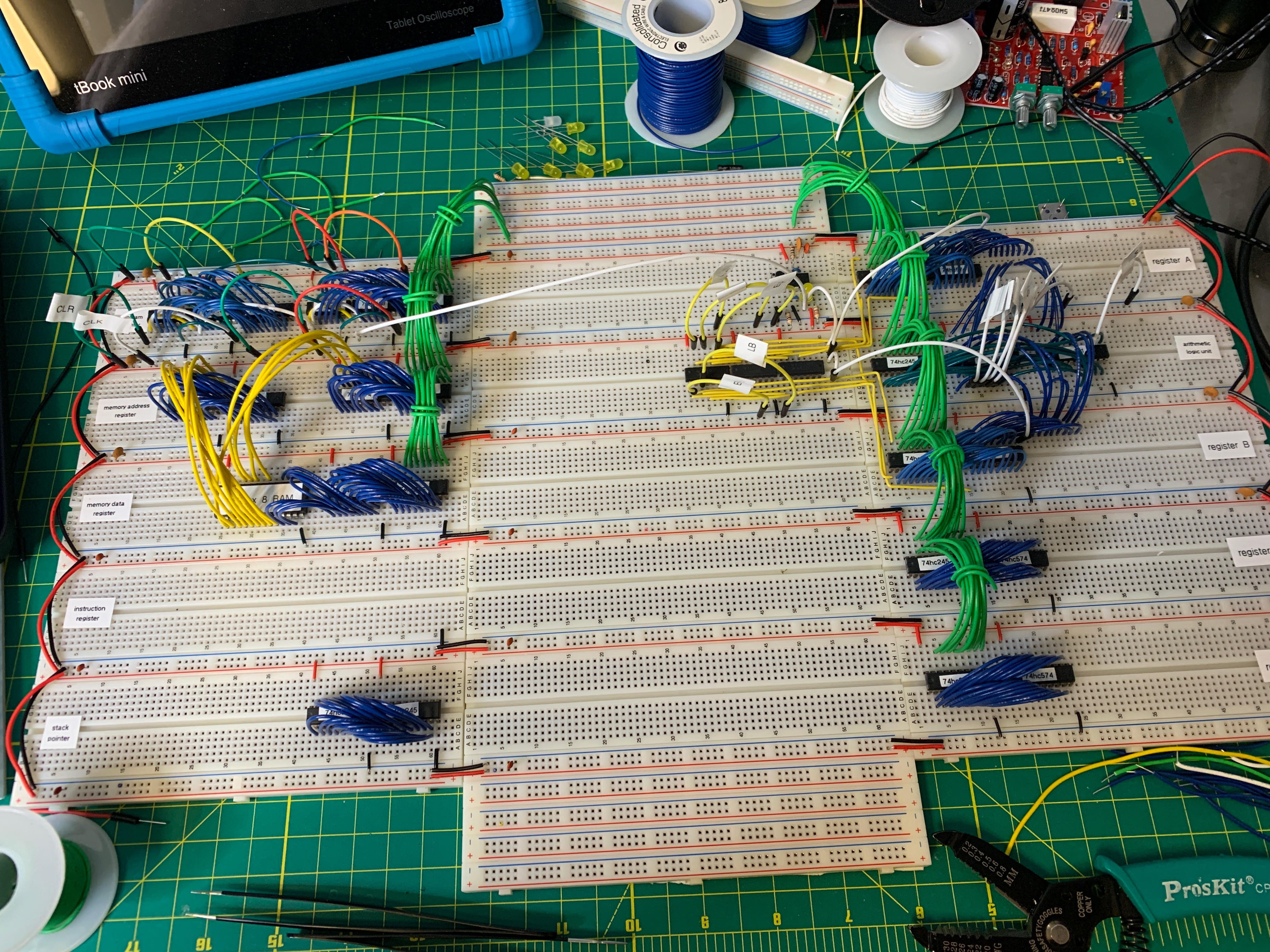Preparing for running a 2E AD&D campaign took me away from this project for a few weeks, but I've managed several hours of good work lately.
I started by hooking up the 16 bit program counter using a chained series of 74HC163 synchronous presettable 4-bit binary counter, with synchronous clear. Using settable counters is important for wiring up jump instructions later and the clear helps with implementing a reset function and clean state after power-on. This module is a little messy, as I haven't consolidated the control logic yet. As a result, colored wires that perform various functions like the reset are just hard wired with various colored jumpers and the module looks more chaotic than it will after a clean-up pass.

Below that are the two memory address registers, MARL and MARH, the low and high portion of a 13-bit address bus, wired in yellow to the RAM chip. The output of the RAM chip is then wired to the flip-flop of the memory data register. All of these registers are wired to the bus in green. Green wires are used exclusively for the 8-bit data bus.
The RAM is an Alliance Memory AS6C6264-55PCN 64K Parallel SRAM, which I haven't tested out yet.
On the right side of the board I've added a X and Y register which will be used to implement 6502-style indexed addressing modes (as well as acting as extra scratch registers when needed). No control logic is hooked up to these registers yet, but they are wired to the bus.

On the bottom left side of the board the stack pointer remains to be wired to the bus and the instruction register has to be hooked up. The IR will be wired to the instruction decoder which will reside in the middle of the board with the rest of the control logic. You can also see that I've added some extra breadboard strips at the top to span the data bus lines across board halves.
The control logic is where the real cognitive effort lies, in a future post I'll enumerate the expected control lines.
I also started wiring up a clock divider board so I could drive the computer from a 14.31818 mhz crystal at speeds stepping down to 1 hz.

 Brandon Reinhart
Brandon Reinhart
Discussions
Become a Hackaday.io Member
Create an account to leave a comment. Already have an account? Log In.